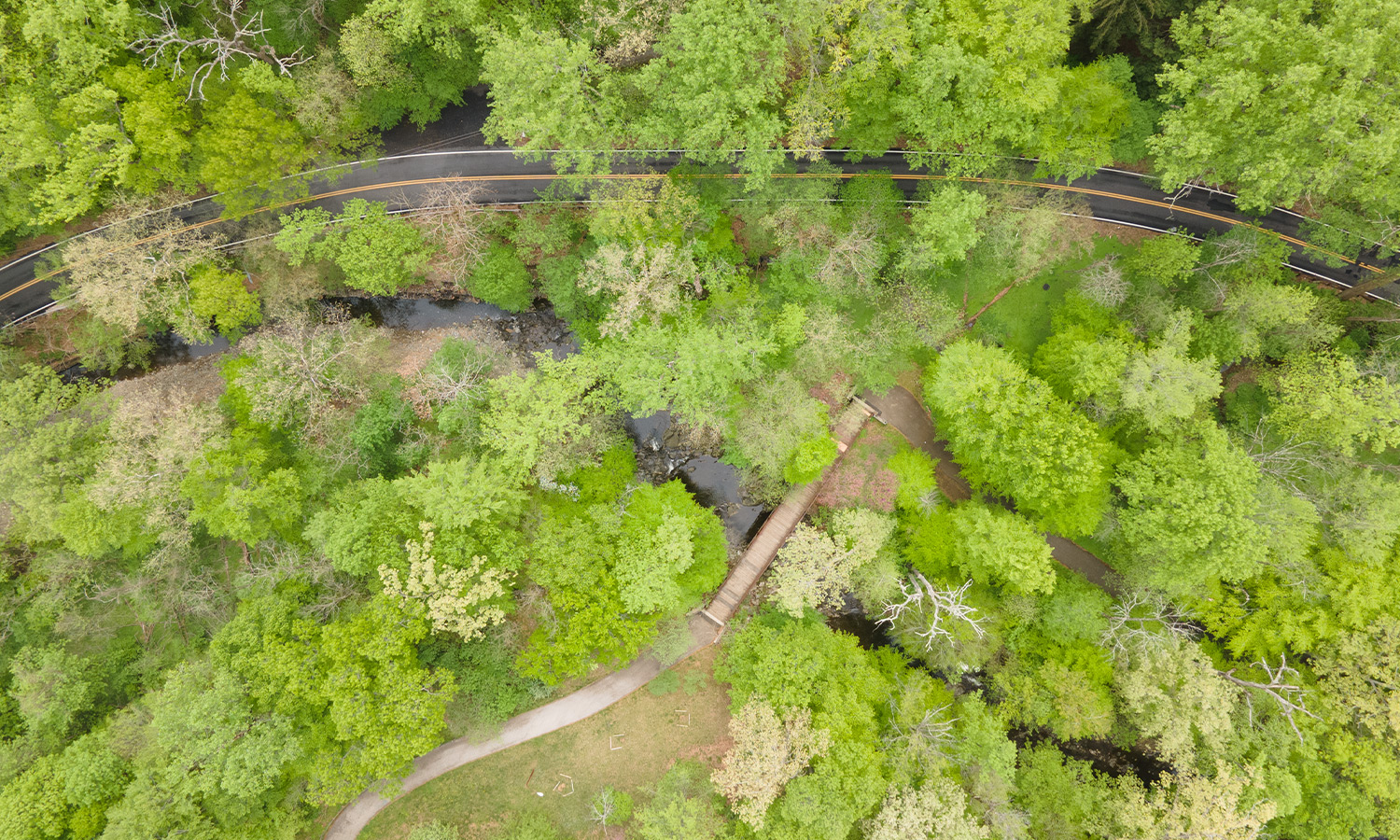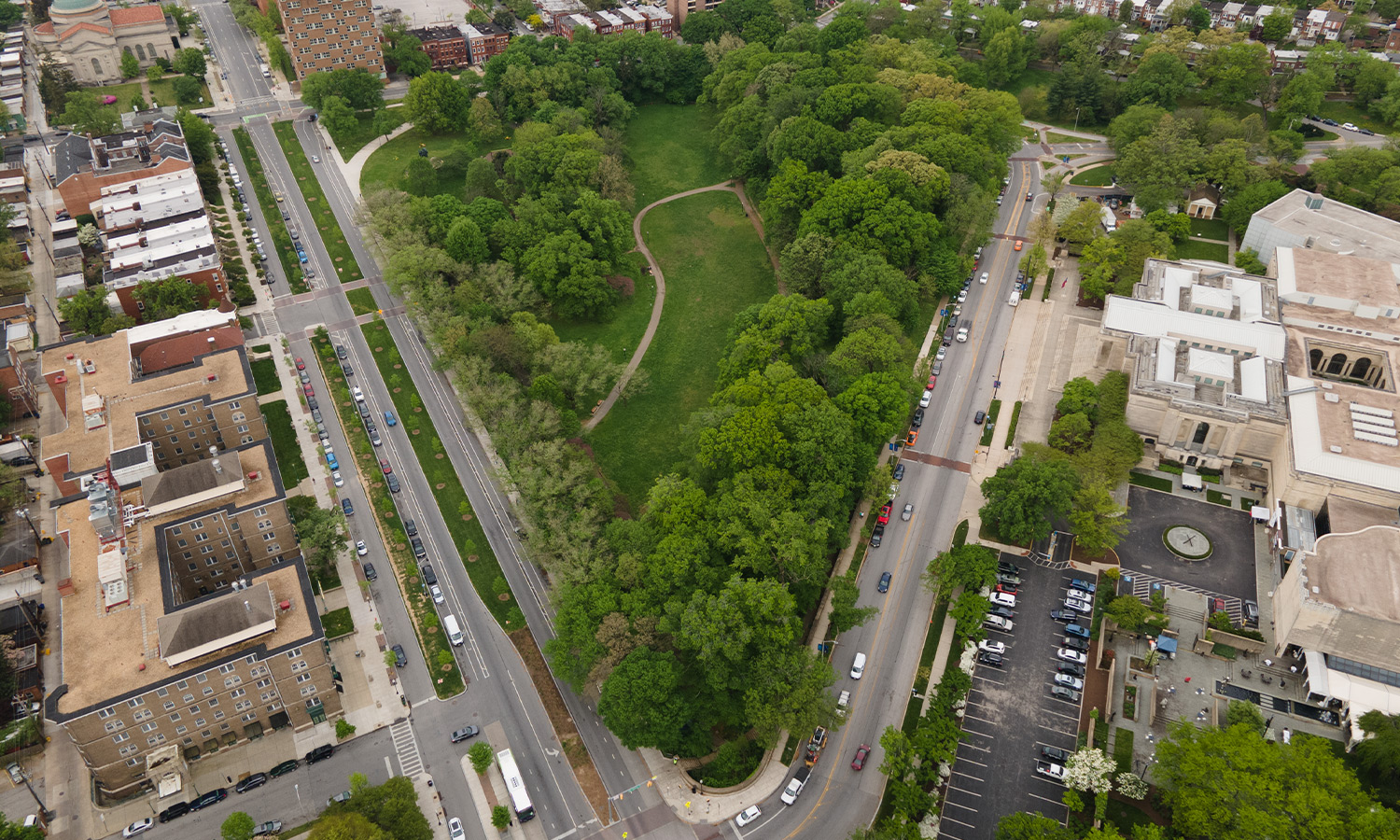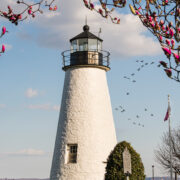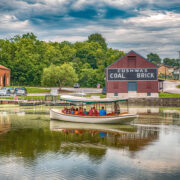Nature & Architecture Collide: Exploring Urban Landscapes in Baltimore

Frederick Law Olmsted Sr., the titan of American landscape architecture, was born in 1822, and celebrations are underway to mark the bicentennial of his birth.
Best known for his first project, a 1858 co-design of New York’s Central Park, Olmsted created such enduring landscapes as the U.S. Capitol Grounds, the Biltmore Estate, and Boston’s Emerald Necklace park system. He was an advocate for publicly accessible parks so everyone could experience the healing power of nature, and he helped conserve some of the nation’s most remarkable natural places such as Yosemite, Yellowstone, and Niagara Falls.
Olmsted Sr. retired in 1895, at which time his sons, John Olmsted and Frederick Law Olmsted Jr., formed Olmsted Brothers Landscape Architects and designed and consulted on thousands of projects until 1949.
I’ve been fascinated by the Olmsteds since I read a biography on Olmsted Sr. and have been eager to experience more of their projects firsthand. So on a temperate spring morning, I hit the road to Baltimore, a city loaded with parks, parkways, and neighborhoods associated with the family.
Parks
My heart rate dropped with each step down the stairs to the Wyman Park Dell’s meadow. I was crawling through traffic moments before on Charles Street, but now I gazed across a sunken green encircled by wooded slopes.

The 16-acre, teardrop-shaped city park located just south of Johns Hopkins University and the Baltimore Museum of Art was designed by the Olmsted Brothers in 1911 and exemplifies the family’s skill at crafting a natural cocoon in an urban environment. I walked the winding path that hugs the perimeter of the lawn. Low, dry-stacked stone walls and scattered park benches provide ample seating to look upon the natural sanctuary.
“Even though it’s small, it gives that feeling of spaciousness,” said Ed Orser, a professor emeritus at the University of Maryland, Baltimore County. “It has a beautiful ring of trees. When you’re in it, you have the feeling that you’re away from the city.”
The Friends of the Wyman Park Dell advocate for the park’s well-being and regularly host cleanups and events such as campouts, movie nights, and a Winter Solstice celebration.
***
As I drove two-lane North Franklintown Road in West Baltimore, I caught glimpses of the Gwynns Falls and its rocky stream bed between the trees. Steep, wooded hillsides flanked the stream. Not a building was in sight. “How am I still in Baltimore?” I said to myself.
In their 1904 report on the development of city parks, the Olmsteds recommended the purchase of waterways such as Gwynns Falls for linear parks. “They were very clear in their plans for Baltimore that overdevelopment of stream valleys could be terrible to the environment,” said Lauren Schiszik, an historic preservation planner for the City of Baltimore.
At more than 1,200 acres, Gwynns Falls Park combines with Leakin Park to form the largest urban woodland in the eastern United States. Olmsted Jr. played a critical role in the city’s purchase of Leakin Park when in 1939 he urged the selection of the site to satisfy a bequest to create a park in honor of former Mayor Shepard A. Leakin. “Here was a chance to buy something before it got developed, and in some ways, it is one of the most remarkable pieces of property the city acquired in that period,” Orser said.
The two parks include a trails network, picnic pavilions, and the Carrie Murray Nature Center. The Friends of Gwynns Falls Leakin Park regularly host nature walks, tree plantings, and trash pickups.
Parkways
The Olmsted Brothers encouraged the city to link its largest parks with parkways. “What makes the Olmsteds’ work so important in Baltimore is that they basically created an emerald necklace like they did in Boston,” Schiszik said. “They developed the park plans for the City with the major parks as jewels and these parkways to connect them.”
Olmsted Sr. co-designed the world’s first parkways for Brooklyn in the 1870s, and the Olmsted Brothers proposed the same for Baltimore. They wrote in their 1904 report that people journeying on parkways should experience “a continuation of the sense of withdrawal from the city which they get in the parks.”
Today park hoppers can take the Gwynns Falls Parkway from its namesake park in West Baltimore to Hanlon Park and Druid Hill Park. Wyman Park connects via 33rd Street to Lake Montebello in East Baltimore. The Alameda intersects with 33rd Street and extends to Clifton Park. These grass and tree-lined corridors remain remarkably intact and are designated as city landmarks to protect them from incompatible changes.
Neighborhoods
I exited the Baltimore Beltway and drove through the post-World War II neighborhoods in Pikesville. Each block followed the same formula: sparse front lawn, brick and vinyl house, a couple of trees in the backyard, repeat.
The scene changed once I turned down Sudbrook Lane and passed under the shade trees that towered like cathedral columns. I had entered Sudbrook Park, a rare example of an Olmsted Sr.-designed suburban development.
Sudbrook originated in 1889 as a summer colony and featured a collection of “cottages,” large retreats owned by Baltimore’s elite. Pikesville may no longer be considered a vacation destination, but this was countryside in the late 19th century, and the Western Maryland Railway provided easy access from the city. Property sales in Sudbrook Park slumped, and it took 60 years until it was finally built out, though not as grandiose as envisioned.
I parked my car near the single-lane humpback bridge over the tracks at the neighborhood’s north entrance and walked around the core. Sudbrook’s arching streets follow the contours of the undulating land and were designed to mimic country lanes, a revolutionary concept for the time. The curves also add intrigue as to what will appear around the next bend, and I was delighted to find many of the charming original residences remain in fine condition. The spacious lots were decorated with a colorful mix of mature trees, bushes, and flowers.

In the early 1900s, the Olmsted sons followed their father’s Sudbrook Park design model with three successful Roland Park Company developments.
The company’s namesake neighborhood was among the first garden suburbs in the United States when construction began in 1891. The Olmsteds were tasked with the layout of the rugged section to the west of Roland Park Avenue six years later. They succeeded not by reshaping the terrain but by embracing it. “They were very sensitive to the contours of the land,” Orser said. “The rest of the city had been built grid style, and all of a sudden they’re weaving their roadways and pathways.”
Roland Park, designed before the automobile was common, is a walker’s paradise, and its 18 footpaths offer a backstage tour of some of the city’s most graceful homes.
The steep paths may not be best for wet days, and I was alone during my visit save for the songbirds fluttering in the treetops above me as I admired the finely manicured yards.

Visual treats were everywhere: art displayed on a fence; a scenic ravine overlook; a hillside covered in daffodils. It’s no surprise that Roland Park is one of the city’s most visually stunning neighborhoods.
The Olmsteds’ next Roland Park Company project was nearby Guilford. The automobile had gained popularity by the time construction began in 1913, so Guilford’s lots and streets are wider than those in Roland Park. St. Paul Street, the main thoroughfare, was designed to twist in order to add visual interest and better show off the tasteful mansions along the route.
Guilford is perhaps best known for Sherwood Gardens, the park that attracts crowds each spring to its spacious lawns to enjoy its tulips.

Olmsted Jr. designed a smaller park here called Stratford Green before Guilford resident John W. Sherwood began to buy up adjoining lots and plant them with tulips.
On the morning of my visit, the flowers were barely open, the grass was drenched, and it was cloudy, yet dozens of wet-bottomed picnickers were scattered throughout the park intent on enjoying the blooms.
Homeland, constructed beginning in 1925, was the final Olmsted project for the company. Its focal point is the Olmsted-designed waterway park in the middle of Springlake Way. The three interconnected ponds are lined by pavers and stocked with koi fish. Ornamental trees surround the grass along the water, and stone benches invite quiet contemplation.
Continuing the Olmsted Legacy
National and local groups are holding programs to explore the ways in which Olmstedian values are relevant today. The Friends of Maryland’s Olmsted Parks and Landscapes, or FMOPL, is dedicated to continuing the Olmsted legacy of accessible public parks, sustainable landscapes, and livable communities in the state. The nonprofit is hosting a series of events to mark Olmsted Sr.’s 200th birthday celebration. Visit the FMOPL website for more information.
Lead Photo: Gwynns Falls Parkway in Baltimore, MD. Photo Credit: Kevin Olson
About the Author
Chris Berger
Chris Berger works as an urban planner and is fond of Maryland’s historic architecture, nature, and sporting traditions. He lives in Montgomery County with his wife, daughter, and dog. You canfollow him on Instagram @cjberger1.















